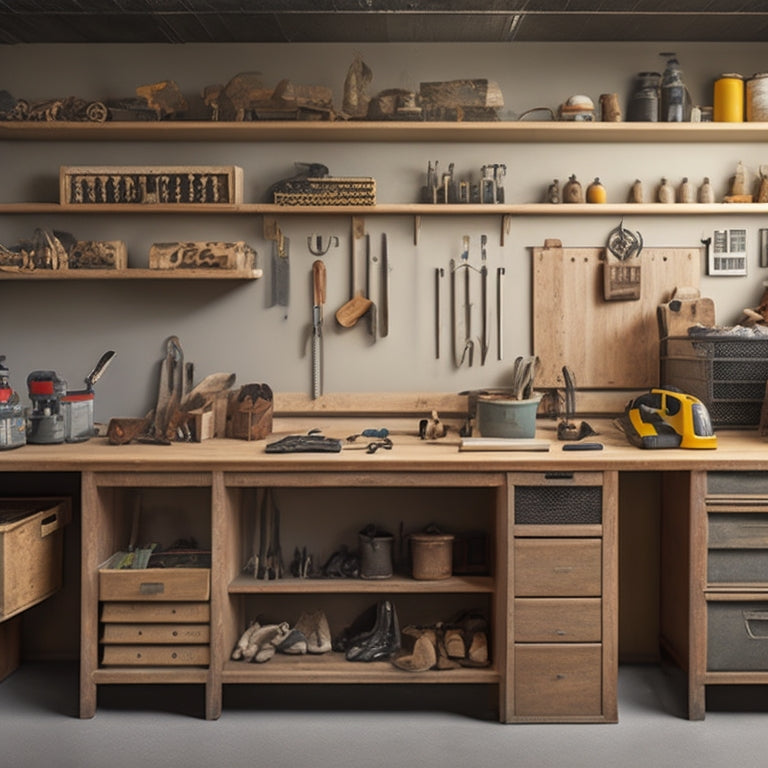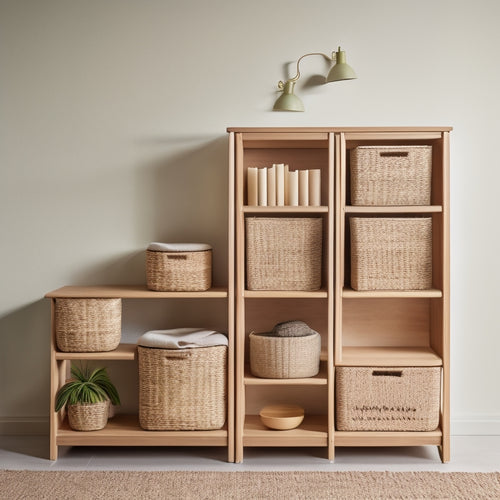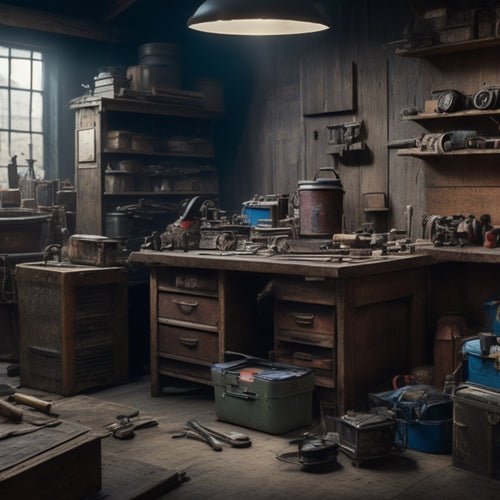
Mastering Workshop Organization Like a Pro
Share
Mastering workshop organization is vital for maximizing productivity and efficiency. To achieve a well-organized workshop, it is imperative to optimize the layout by prioritizing accessibility, visibility, and comfort. Streamline tool storage systems by categorizing tools into groups and assigning designated storage space. Efficient workbench management is also key, ensuring frequently used tools are easily accessible and incorporating time-saving techniques. By implementing these strategies, professionals and hobbyists can work smarter, not harder. As you refine your approach, discover the specific techniques and innovative solutions that will take your workshop organization to the next level.
Key Takeaways
• Optimize workshop layout to maximize efficiency, accessibility, and comfort by implementing ergonomic design principles and designated work zones.
• Streamline tool storage systems by categorizing tools, assigning designated space, and utilizing innovative solutions to reduce downtime and improve productivity.
• Efficiently manage workbenches by maximizing productivity, optimizing tool organization, and ensuring easy access to frequently used tools.
• Enhance workflow efficiency by reducing waste, improving performance, and streamlining workflow to minimize distractions and tap into the full potential of the workspace.
• Implement continuous improvement strategies to discover innovative solutions, refine approaches, and work smarter, not harder, to achieve long-term success.
Optimizing Your Workshop Layout
Efficiency is the cornerstone of a well-functioning workshop, and optimizing your workshop layout is essential to achieving it. By maximizing workspace efficiency, you can reduce waste, increase productivity, and improve overall performance.
Organizing tool racks and implementing ergonomic design principles can greatly enhance your workshop's functionality. Creating designated work zones for specific tasks or projects can also help to streamline your workflow and minimize distractions.
A well-designed layout should prioritize accessibility, visibility, and comfort, ensuring that all necessary tools and materials are within easy reach. By optimizing your workshop layout, you can tap into the full potential of your workspace and take your productivity to the next level.
Streamlining Tool Storage Systems
A well-organized workshop layout is only as effective as its tool storage system, and implementing a streamlined approach to storing tools can greatly reduce downtime and improve overall productivity. Effective tool organization is essential in achieving this goal.
By categorizing tools into groups and assigning a designated storage space for each, workshop operators can quickly locate the tools they need, reducing idle time and increasing efficiency. Innovative storage solutions such as pegboards, tool chests, and modular cabinets can help optimize tool storage, keeping frequently used tools within easy reach.
Efficient Workbench Management
How can workshop operators create a workbench that is tailored to their specific needs and workflow, allowing them to work more efficiently and effectively?
By implementing efficient workbench management, operators can maximize productivity and minimize downtime. This involves optimizing tool organization, ensuring that frequently used tools are easily accessible and within reach.
Additionally, incorporating time-saving techniques, such as assigning specific tasks to designated workstations, can streamline workflows and reduce shift times.
A well-organized workbench also enables operators to quickly identify and address any bottlenecks or inefficiencies, allowing for continuous improvement and refinement.
Frequently Asked Questions
How Do I Declutter My Workshop Without Wasting Valuable Tools?
Imagine a cluttered workshop as a tangled garden; pruning unnecessary items and categorizing tools by function, then allocating zones for each group, allows for a harmonious growth of productivity, freeing valuable space and time.
What Safety Measures Should I Take When Organizing Chemicals?
When handling chemicals, conduct a thorough Hazard Assessment to identify potential risks, and guarantee accurate Chemical Classification to segregate and store substances safely, minimizing exposure and maintaining a secure workshop environment.
Can I Customize My Workshop Organization to Fit My Specific Needs?
To optimize your workspace, consider a personalized layout that accommodates your unique workflow, paired with flexible storage solutions that adapt to your specific needs, ensuring a tailored and efficient organization system.
How Often Should I Clean and Maintain My Workshop Tools?
Regularly cleaning and maintaining workshop tools is essential to prevent Tool Wear and maintain Equipment Calibration, thereby optimizing performance, reducing errors, and prolonging tool lifespan, ultimately resulting in enhanced productivity and efficiency.
Are There Any Organization Systems Specifically for Small Workshops?
Optimizing small workshop spaces requires strategic organization systems. Compact shelves and modular layouts are ideal for efficiently storing tools and supplies, allowing for seamless workflow and increased productivity in confined areas.
Related Posts
-

Open Storage Bins for Shelving Units
You need open storage bins that integrate seamlessly with your shelving units to boost your organization, productivit...
-

10 Best Tool Boxes for Every Budget and Job
You're looking for a tool box that fits your budget and job requirements. Whether you're a DIY enthusiast, electricia...
-

Top 5 Small Tool Organizers for Your Workshop
You're looking to optimize your workshop's efficiency with high-quality small tool organizers. Compact storage soluti...


